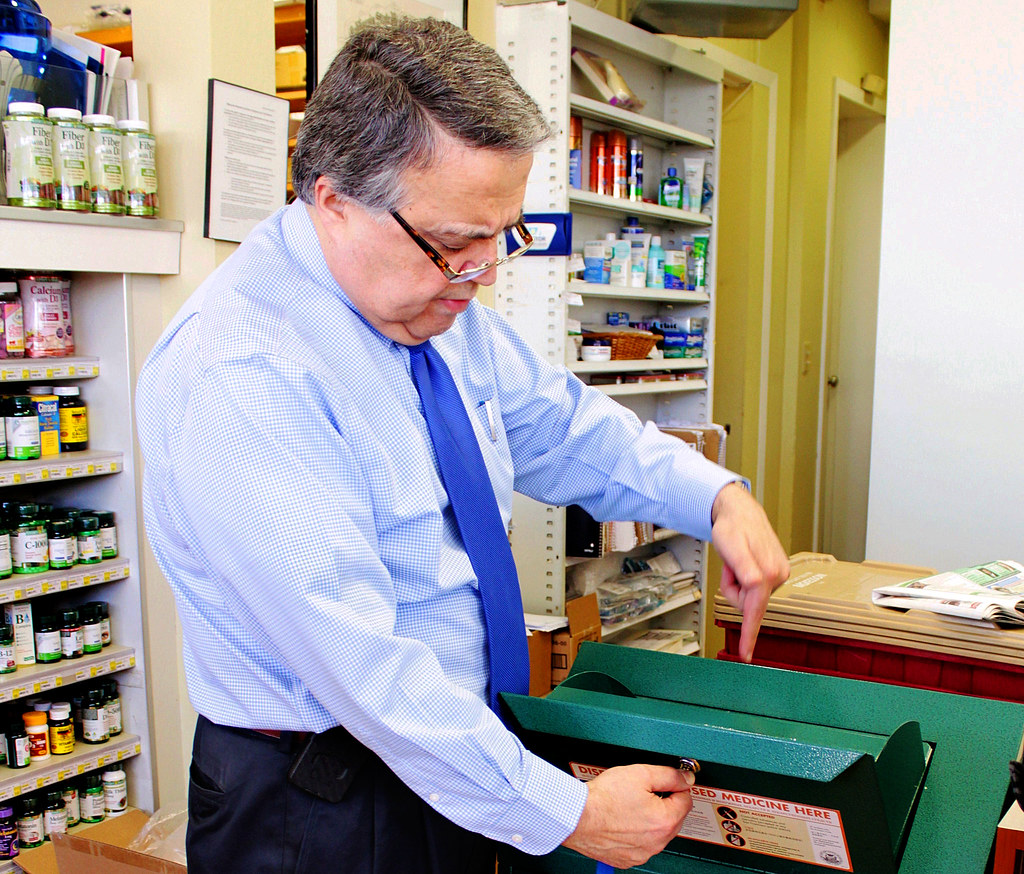
In response to a mounting body of evidence that says pharmaceutical waste is ending up in our drinking water and polluting the environment, San Francisco has instituted a new program offering people safe, easy and free ways to dispose of their unused medicines.
San Francisco, through the Department of the Environment and the Public Utilities Commission, instituted the Safe Medicine Disposal pilot program to give residents the new option of disposing their unwanted medication in a free and environmentally friendlier way.
In its first nine months, the program has already collected for disposal more than 10,000 pounds of unused medicine. Project leaders are calling it an early victory beyond many of their expectations.
“It’s a very efficient and successful program,” Ryan Jackson, residential toxics reduction associate for SF Environment and the program’s lead, said, adding that the proof is in the disposal.
Previous tactics were too costly for the city, like the pre-posted mail-back program that cost the city $3.75 per envelope. The Safe Medicine Disposal program began in April and will run until June when its funding runs out.
Supporters hope the pharmaceutical companies, who picked up the initial tab of $110,000, will fund the pilot program for another year. Otherwise, Board of Supervisors president David Chiu will pursue legislation that will force the pharmaceutical companies to pay for prescription drug disposal programs.
“It’s a real logical program,” Jackson said. “People don’t want excess medicine around that can be accidentally misused or abused.”
A major health concern for the drug disposal program is the prescription drug abuse epidemic. The stockpiling of drugs can lead to accidental overdose and increased opportunity for abuse.
In 2009, 91 percent of all unintentional poisoning deaths in the U.S. were caused by prescription pain drugs, according the Center for Disease Control and Prevention. An estimated 100 people die every day from drug overdoses, the majority of which were caused by prescription drugs — higher rates than cocaine and heroin. Prescription drug related overdose rates have tripled since 1990. The 300 percent increase in prescription drug deaths suspiciously mirrors the increase in sales.
Dr. Phillip Coffin, director of substance use research at the San Francisco Department of Public Health, said prescription drug abuse is a priority that concerns the health department and like the rest of the country, they have seen prescription opiate overdose deaths increase as high as fivefold.
“Prescription opioid related deaths have gone from so low we didn’t count them,” Coffin said, “to 120 deaths a year.”
Safely disposing of unwanted medicine isn’t a new idea for the city. It just happens to be the first one that seems to be working.
“What we found was that the program demonstrated a need,” SFPUC acting pollution prevention manager Karri Ving said. “We never anticipated that the drop boxes would be filled with more than 1,000 pounds every month.”
Since the 1990s, the city has struggled to devise a working drug disposal program that was cost effective for both the city and residents.
At first, project leaders didn’t know what to expect as the pilot program got underway. The success was dependent on residents actually using the drop boxes, despite years of contradictory advice.
“We had to reeducate the residents one at a time,” Jackson said, adding he gets calls “each day from residents who are unfamiliar with the pilot program collection network, but simply have a hunch that medicine shouldn’t be flushed or land-filled.”
Unwanted prescription drugs are commonly flushed or trashed, but new studies in the last decade have shown that the drugs’ active ingredients can end up in our water ways through sewage treatment plants or landfills that can leach them into ground water or streams.
Sedatives, antidepressants, antibiotics, steroids and acetaminophen are some of the pharmaceuticals that have been detected in the waterways and drinking water of most major cities. The most notable study was done by the Associated Press in 2008. In that study, they found the sex hormone, estradiol, in San Francisco’s drinking water. After the study was published, the Chronicle published reports by a chemist with the Southern Nevada Water Authority refuting that claim.
Ving, who oversees pollution control for the city’s sewage system, didn’t know or have any information about trace amounts of pharmaceuticals having ever been detected in San Francisco drinking water or the bay. She did add that our drinking water comes from the Hetch Hetchy Reservoir, and wouldn’t have contact with sewage treated water or underground aquifers at risk from landfill pollutants.
The only evidence of pharmaceuticals in the bay comes from a single study by the San Francisco Estuary Institute. By performing grab samples in the South Bay, they detected acetaminophen, a popular over-the-counter pain killer.
While pharmaceutical pollution is a growing concern documented across the country, the harmful impact it may have on the environment and humans remains unknown. One study, cited by a waste disposal program in Washington, found prolonged exposure to antidepressants disrupted fish reproduction.
Medicinal disposal programs may not be able to measure its success in terms of overdose prevention or environmental protection, but the program takes pride in prevention and providing a service the people want.
“The early success of the program is a great indicator of behavior change,” Jackson said, “though data linking this success to detected changes in local waterways has yet to be collected.”







